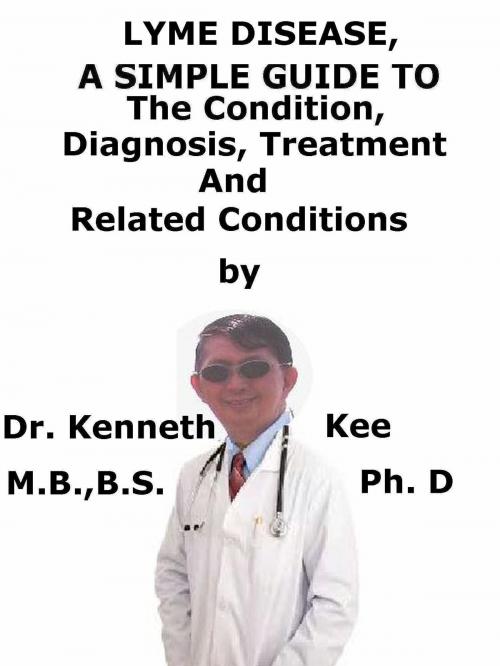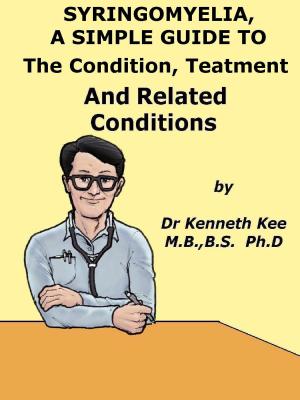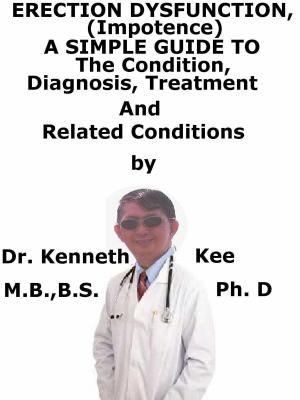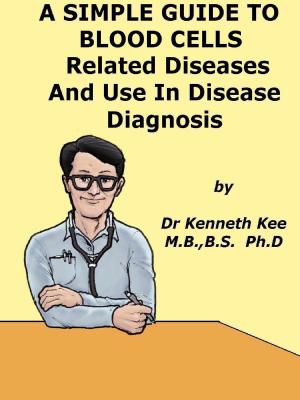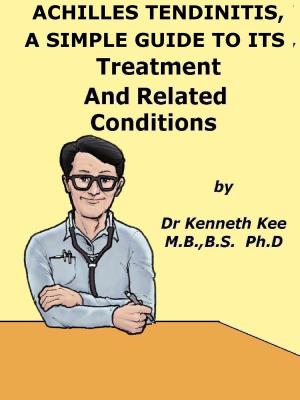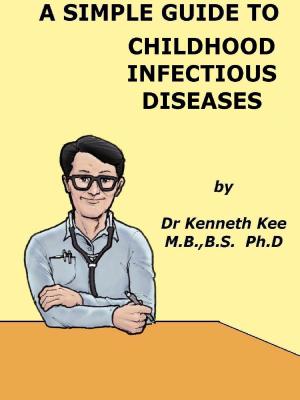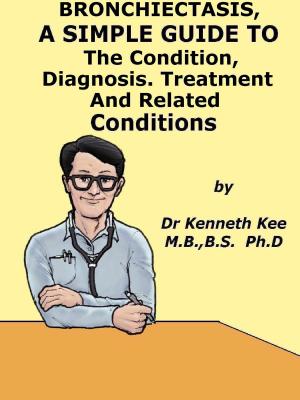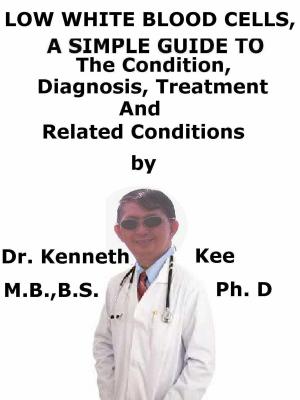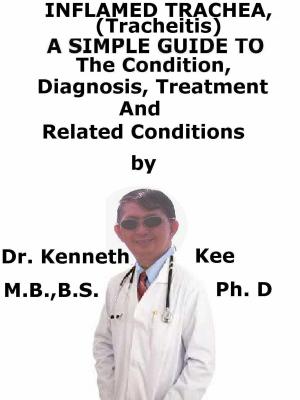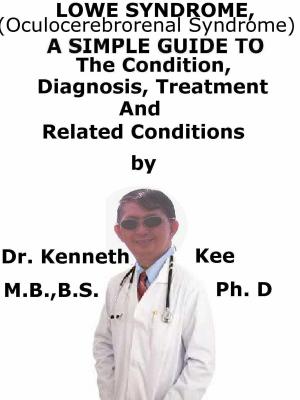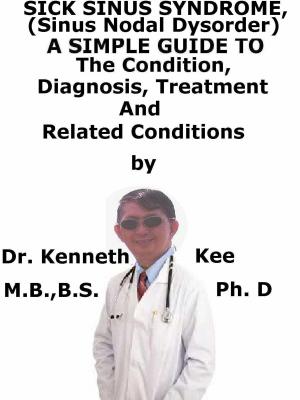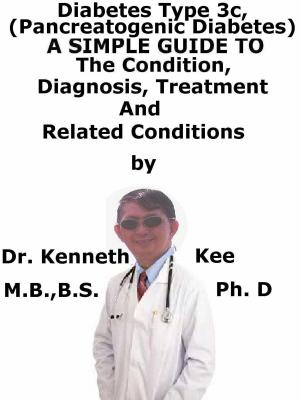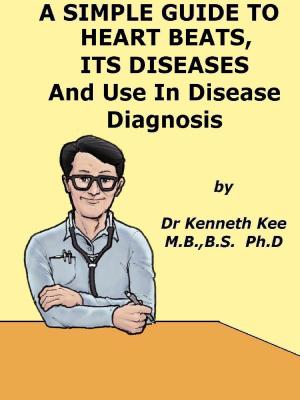Lyme Disease A Simple Guide To The Condition, Diagnosis, Treatment And Related Conditions
Nonfiction, Health & Well Being, Medical, Ailments & Diseases, Infectious Diseases, General| Author: | Kenneth Kee | ISBN: | 9781370800780 |
| Publisher: | Kenneth Kee | Publication: | April 7, 2017 |
| Imprint: | Smashwords Edition | Language: | English |
| Author: | Kenneth Kee |
| ISBN: | 9781370800780 |
| Publisher: | Kenneth Kee |
| Publication: | April 7, 2017 |
| Imprint: | Smashwords Edition |
| Language: | English |
Lyme disease is a bacterial infection that is spread through the bite of one of many species of ticks.
Lyme disease is produced by the bacteria Borrelia burgdorferi or Borrelia mayonii.
These bacteria grow inside of certain infected ticks and spread to humans when the patient is bitten by an infected tick, both adult and nymph, of the genus Ixodes.
There are 3 stages of Lyme disease:
1. Stage 1 is called early localized Lyme disease.
The bacteria are localized and have not spread through the body.
2. Stage 2 is called early disseminated Lyme disease.
The bacteria have started to extend throughout the body.
3. Stage 3 is called late disseminated Lyme disease.
The bacteria have extended throughout the body.
Risk factors for Lyme disease are:
1. Doing outside activities that risk higher tick exposure (e.g., gardening, hunting, or hiking) in an area where Lyme disease happens
2. Presence of a pet that may bring infected ticks home
3. Strolling in places with high grasses
Lyme disease is the most frequent tick-borne infection in the northern hemisphere.
Lyme disease is complicated and produces different symptoms to form, depending on the stage of the infection:
1. A skin lesion known as erythema migrans is the most frequent symptom linked with early-stage Lyme disease.
2. There can be neurological, cardiac, and arthritic problems that form in later stages of Lyme disease.
3. Pauciarticular arthritis (affecting 4 or fewer joints) is the most frequent disorder linked with late-stage Lyme disease.
Small rodents and deer have an important part in a deer tick’s life cycle.
1. Deer ticks lay eggs that turn into larvae that feed on mice and other small mammals
2. Larvae then form into immature ticks called nymphs
3. Nymphs then feed on small mammals and humans
4. Adult deer ticks normally feed on deer during the adult part of their life cycles
5. Both nymphs and adult ticks can spread Lyme disease-causing bacteria.
The recent rise of the deer population in the Northeast and of housing developments in areas where deer ticks are often found probably contributed to its higher spread.
The symptoms are the same as the flu and may be:
1. Fever and chills
2. General ill feeling
3. Headache
4. Joint pain
5. Muscle pain
6. Stiff neck
There may be a "bull's eye" rash, a flat or slightly raised red spot at the location of the tick bite.
Diagnosis:
The most often test used is the ELISA for Lyme disease test.
The immunoblot test is done to confirm ELISA results.
Other tests that may be performed when the infection has extended are:
1. Electrocardiogram
2. Echocardiogram to look at the heart
3. MRI of the brain
4. Spinal tap (lumbar puncture to examine spinal fluid)
Treatment:
A single dose of the antibiotic doxycycline may be administered to someone soon after being bitten by a tick
The selection of antibiotic is dependent on the stage of the disease and the symptoms.
Frequent choices are doxycycline, amoxicillin, azithromycin, cefuroxime, and ceftriaxone.
Pain medicines, such as ibuprofen, are occasionally given for joint stiffness.
If the patient has Lyme arthritis, the doctors may manage the patient with oral antibiotics.
If the arthritis is serious, the patient may be given ceftriaxone or penicillin intravenously.
If the patient has neurological symptoms, the doctor will be likely to treat the patient with the antibiotic ceftriaxone given intravenously once a day for a month
Doctors choose to treat people with Lyme disease who have heart symptoms with antibiotics such as ceftriaxone or penicillin given intravenously for about 2 weeks.
Patients with Lyme disease seldom have long-term heart damage such as heart block
A pacemaker may be needed.
TABLE OF CONTENT
Introduction
Chapter 1 Lyme Disease
Chapter 2 Causes
Chapter 3 Symptoms
Chapter 4 Diagnosis
Chapter 5 Treatment
Chapter 6 Prognosis
Chapter 7 Septic Arthritis
Chapter 8 Bone Infection
Epilogue
Lyme disease is a bacterial infection that is spread through the bite of one of many species of ticks.
Lyme disease is produced by the bacteria Borrelia burgdorferi or Borrelia mayonii.
These bacteria grow inside of certain infected ticks and spread to humans when the patient is bitten by an infected tick, both adult and nymph, of the genus Ixodes.
There are 3 stages of Lyme disease:
1. Stage 1 is called early localized Lyme disease.
The bacteria are localized and have not spread through the body.
2. Stage 2 is called early disseminated Lyme disease.
The bacteria have started to extend throughout the body.
3. Stage 3 is called late disseminated Lyme disease.
The bacteria have extended throughout the body.
Risk factors for Lyme disease are:
1. Doing outside activities that risk higher tick exposure (e.g., gardening, hunting, or hiking) in an area where Lyme disease happens
2. Presence of a pet that may bring infected ticks home
3. Strolling in places with high grasses
Lyme disease is the most frequent tick-borne infection in the northern hemisphere.
Lyme disease is complicated and produces different symptoms to form, depending on the stage of the infection:
1. A skin lesion known as erythema migrans is the most frequent symptom linked with early-stage Lyme disease.
2. There can be neurological, cardiac, and arthritic problems that form in later stages of Lyme disease.
3. Pauciarticular arthritis (affecting 4 or fewer joints) is the most frequent disorder linked with late-stage Lyme disease.
Small rodents and deer have an important part in a deer tick’s life cycle.
1. Deer ticks lay eggs that turn into larvae that feed on mice and other small mammals
2. Larvae then form into immature ticks called nymphs
3. Nymphs then feed on small mammals and humans
4. Adult deer ticks normally feed on deer during the adult part of their life cycles
5. Both nymphs and adult ticks can spread Lyme disease-causing bacteria.
The recent rise of the deer population in the Northeast and of housing developments in areas where deer ticks are often found probably contributed to its higher spread.
The symptoms are the same as the flu and may be:
1. Fever and chills
2. General ill feeling
3. Headache
4. Joint pain
5. Muscle pain
6. Stiff neck
There may be a "bull's eye" rash, a flat or slightly raised red spot at the location of the tick bite.
Diagnosis:
The most often test used is the ELISA for Lyme disease test.
The immunoblot test is done to confirm ELISA results.
Other tests that may be performed when the infection has extended are:
1. Electrocardiogram
2. Echocardiogram to look at the heart
3. MRI of the brain
4. Spinal tap (lumbar puncture to examine spinal fluid)
Treatment:
A single dose of the antibiotic doxycycline may be administered to someone soon after being bitten by a tick
The selection of antibiotic is dependent on the stage of the disease and the symptoms.
Frequent choices are doxycycline, amoxicillin, azithromycin, cefuroxime, and ceftriaxone.
Pain medicines, such as ibuprofen, are occasionally given for joint stiffness.
If the patient has Lyme arthritis, the doctors may manage the patient with oral antibiotics.
If the arthritis is serious, the patient may be given ceftriaxone or penicillin intravenously.
If the patient has neurological symptoms, the doctor will be likely to treat the patient with the antibiotic ceftriaxone given intravenously once a day for a month
Doctors choose to treat people with Lyme disease who have heart symptoms with antibiotics such as ceftriaxone or penicillin given intravenously for about 2 weeks.
Patients with Lyme disease seldom have long-term heart damage such as heart block
A pacemaker may be needed.
TABLE OF CONTENT
Introduction
Chapter 1 Lyme Disease
Chapter 2 Causes
Chapter 3 Symptoms
Chapter 4 Diagnosis
Chapter 5 Treatment
Chapter 6 Prognosis
Chapter 7 Septic Arthritis
Chapter 8 Bone Infection
Epilogue
